#jean-baptiste de laubier
Text

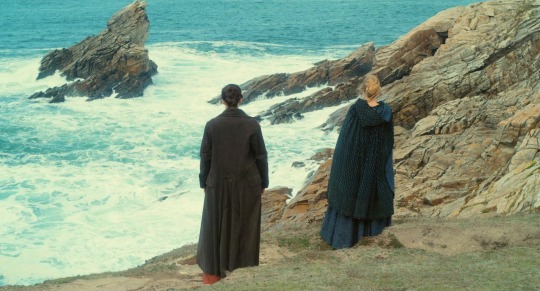
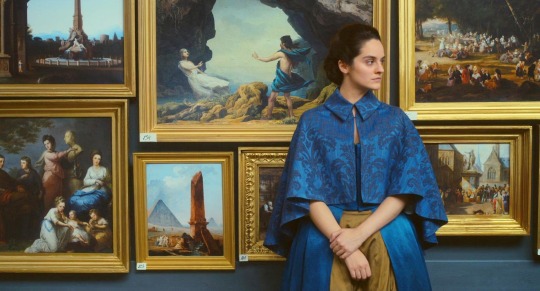

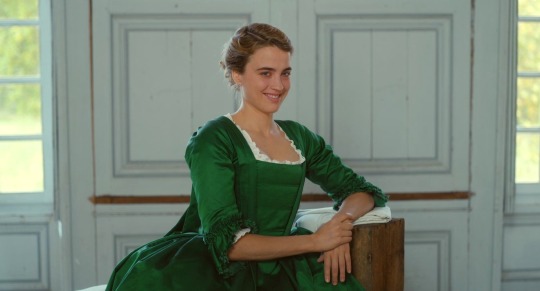


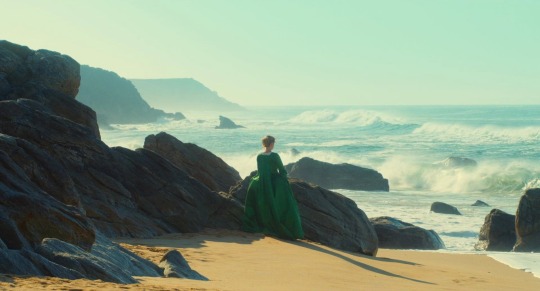


— Portrait of a Lady on Fire (2019), written and directed by Céline Sciamma.
#portrait of a lady on fire#2019#screencaps#beauty#actors#cinema#movies#movie#cinematography#movie stills#portrait de la jeune fille en feu#celine sciamma#noemie merlant#adele haenel#claire mathon#julien lacheray#jean-baptiste de laubier#arthur simonini#cannes film festival#france#french cinema#luana barjami#valeria golino
355 notes
·
View notes
Text
Petite Maman
Benvenuti o bentornati sul nostro blog. Nello scorso articolo abbiamo deciso di cambiare argomento e di passare al mondo dei fumetti recensendo, dopo tantissimo tempo, un comic sui supereroi ossia Superman: Su nel cielo. In questa storia Superman scopre che una bambina orfana è stata rapita da degli alieni e, dopo una lunga riflessione, decide di abbandonare la Terra per cercarla, intraprendendo…

View On WordPress
#Île-de-France#Bénédicte Couvreur#Canal+#Céline Sciamma#cinema francese#Claire Mathon#drammatico#fantasy#film#film francese#France 3#France Télévisions#Francia#Gabrielle Sanz#Jean-Baptiste de Laubier#Jeséphine Sanz#Julien Lacheray#La Musique du Futur#Lilies Films#malinconico#Margot Abascal#Marion#movies#Nelly#Nina Meurisse#Para One#perdita#Petite Maman#Pyramide Distribution#rapporto madre-figlia
0 notes
Photo



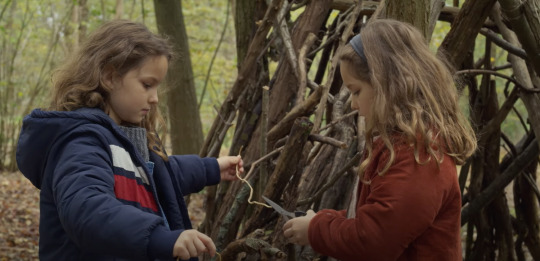
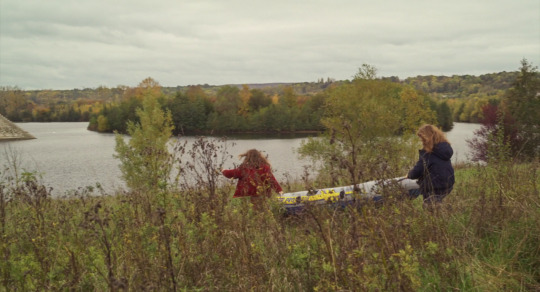



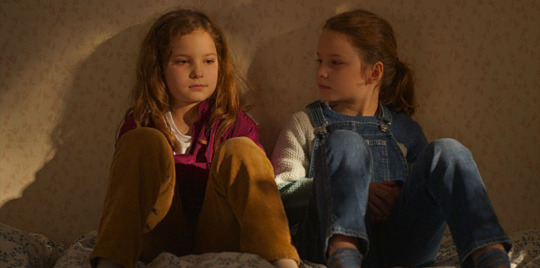

Petite Maman (Céline Sciamma, 2021)
Cast: Joséphine Sanz, Gabrielle Sanz, Nina Meurisse, Stéphane Varupenne, Margot Abascal. Screenplay: Céline Sciamma. Cinematography: Claire Mathon. Production design: Lionel Brison. Film editing: Julien Lacharay. Music: Jean-Baptiste de Laubier.
After watching so many movies that thud and blunder along for more than two hours to no lasting effect, it's a blessed relief to watch Céline Sciamma accomplish so much so quietly in just 72 minutes. Petite Maman begins with 8-year-old Nelly (Joséphine Sanz) saying goodbye to the residents of the nursing home where her grandmother has just died. She then accompanies her parents (Nina Meurisse, Stéphane Varupenne) to the house where her grandmother lived, but her mother is so overcome by emotion at the prospect of clearing out a place so laden with memories, that she leaves her husband and Nelly to finish the job. While her father does most of the work, Nelly wanders out to play in the autumnal woods near her grandmother's house. There she meets another 8-year-old called Marion (Gabrielle Sanz), who is building a hut out of fallen branches in the forest. Immediately we are struck by the fact that Nelly's mother, who is also named Marion, had told Nelly about the hut she had built in the forest. And so begins a bit of magic, in which we realize along with Nelly that she has traveled back in time to meet her own mother as a child. Sciamma does this revelation with such finesse that it took my breath away, crafting a haunting fable about family and memory and regret. It's only the most recent of her triumphs as a director, following such remarkable films as Water Lilies (2007), Tomboy (2011), Girlhood (2014), and the marvelous Portrait of a Lady on Fire (2019).
0 notes
Video
youtube
La Jeune Fille en Feu (Bande originale du film) · Para One · Arthur Simonini - the remarkable voice-and-clapping piece at the center of the film of the same name (Portrait of a Lady On Fire)
#Jean-Baptiste de Laubier#la jeune fille en feu#female vocal#choral music#soundtrack#para one#2019#arthur simonini#portrait of a lady on fire
5 notes
·
View notes
Photo

Movie #18 of 2020: Portrait of a Lady on Fire
“I don’t cheat, I just play fast.”
#2019#french#portrait of a lady on fire#drama#romance#celine sciamma#claire mathon#jean-baptiste de laubier#arthur simonini#julien lacheray#italian#18#red weapon 8k monstro
1 note
·
View note
Text
Petite Maman (2021)
Petite Maman by #CelineSciamma, "detailed enough to avoid just being an adorable gimmick, though ultimately it's little more than that", Today's review on MyOldAddiction.com
CELINE SCIAMMA
Bil’s rating (out of 5): BBB
France, 2021. Lilies Films, France 3 Cinema, La Région Île-de-France, Canal+, France Televisions, Cine+. Screenplay by Céline Sciamma. Cinematography by Claire Mathon. Produced by Bénédicte Couvreur. Music by Jean-Baptiste de Laubier. Production Design by Lionel Brison. Costume Design by Céline Sciamma. Film Editing by Julien Lacheray.
A little girl…

View On WordPress
#Bénédicte Couvreur#Berlin 2021#Canal+#Celine Sciamma#Cine+#Claire Mathon#Florès Cardo#France#France 3 Cinema#France Televisions#Gabrielle Sanz#Guylène Péan#Jean-Baptiste de Laubier#Josée Schuller#Joséphine Sanz#Julien Lacheray#La Région Île-de-France#Lilies Films#Lionel Brison#Margot Abascal#Nina Meurisse#Stéphane Varupenne#TIFF 2021
0 notes
Text
Petite Maman
★★★★★
Existe un lugar donde todo aquello que vivimos resuena con una única voz. Donde todo huele y sabe a primera vez. Ese lugar donde aún somos eternos es nuestra infancia. Y gracias a este milagro hecho película la patria del niño que un día fuimos es un poquito más grande y cercana. Petite maman, el quinto largometraje de la cineasta francesa Céline Sciamma, logra emocionar hasta el hipo…
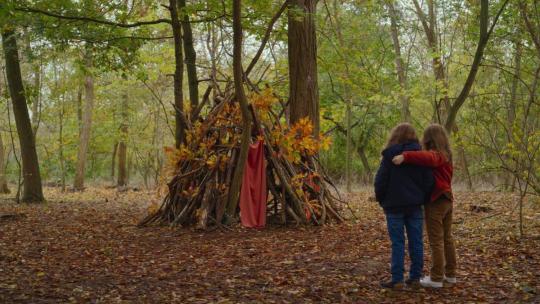
View On WordPress
0 notes
Photo

Petite maman, Céline Sciamma (2021)
#Céline Sciamma#Joséphine Sanz#Gabrielle Sanz#Nina Meurisse#Stéphane Varupenne#Margot Abascal#Claire Mathon#Jean Baptiste de Laubier#Julien Lacheray#2021#woman director
3 notes
·
View notes
Video
Part 2: Thank you for inspiring us with so much love to take forward together #leplusvivantpossible
Links: 45,46,47,48,49 | 50,51,52,53,54 | 55,56,57,58,59 | 60,61,62,63,64 | 65,66,67,68,69 | 70,71,72,73,74 | 75,76,77,78,79 | 80,81,82,83,84 | 85,86,87,88,89 | 90,91,92,93,94 | 95,96
Music | Part 1
#celine sciamma#adèle haenel#noémie merlant#valeria golino#luana bajrami#claire mathon#benedicite couvreur#hélène delmaire#jean baptiste de laubier#arthur simonini#valeria de loof#daniel sobrino#portrait of a lady on fire#portrait de la jeune fille en feu#portrait montage
131 notes
·
View notes
Photo
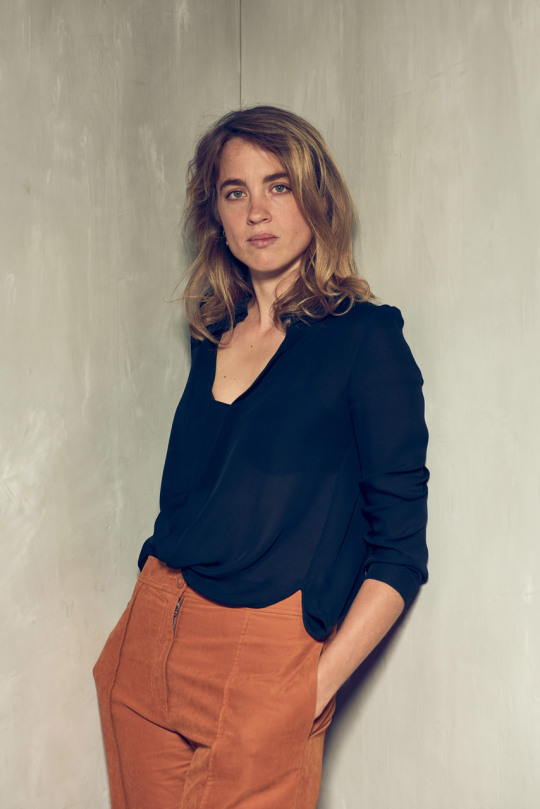
Translated interview with Adèle Haenel, heroine of “Portrait of a Lady on Fire”
Performing in order to richly live the now
Tomoko Ogawa, in: Ginza Mag, 3rd of December 2020
Translation by Rose @rosedelosvientos 🙏🏾
Set in 18th-century France, the daughter of an aristocrat who refuses marriage and a female painter who makes her portrait - two people of different social status - meet and fall in an unforgettable love that will last for a lifetime.
In the film “Portrait of a Lady on Fire”, Héloïse, an aristocrat, is played by Adèle Haenel, who, as an actress, always thinks, acts and decides constantly for herself. Late last year, she filed a complaint against the director for sexual abuse during/after her first film debut 18 years ago. At the César Awards, she protested and walked out after Polanski won Best Director, which shook the world of French cinema and is also still fresh from memory.
This film is also the work of Céline Sciamma, the director of Water Lilies, in which Adèle Haenel also appeared. Adèle recounts her thoughts about her current film, and director Sciamma’s “Female Gaze”, who, for many years was also her partner in her private life.
Q: Last year, “Portrait of a Lady on Fire” opened and was screened in Europe, and won Best Screenplay at the 72nd Cannes Film Festival. A year and a half has passed since then. Do you feel the magnitude of this work’s influence on women empowerment?
A: If put this way, people might think that it may be too subjective, but I think that not only this film, but Céline Sciamma’s works have constantly played a role in empowering women. But, it was understood that, surely, there’s also a way - that it’s possible to show the worldview of equal love between women from a different perspective, in a history where there are a lot of films that contained an element of women being controlled unilaterally from men’s point of view.
Q: Not dominance, but the joy of collaborating and creating something with someone, and the love that continues to grow is depicted in this film. What do you think sets it apart from many other films that have depicted love until now?
A: Until now, love has been depicted in ways such as controlling the other person, and in a sensual manner, but in this film, the nature of love is kinda different, I guess. The two women who happen to be in that place - while interacting extemporaneously using language that is characteristic of themselves and figuring each other out - are building up their relationship. While it’s fictional without altering historical facts, it’s a proposal that’s entirely different from what love looks like until now. I think that it’s a film that brings with it a new perspective.
Q: It’s not a one-sided view from the painter’s perspective where the person whose portrait is being painted is the “muse”, but rather of both sides looking at each other, and the connection of being seen is depicted. I think that you’ve also been called a “muse” up to this point, but during those times, do you remember how you felt then?
A: The word “muse” is used against actresses as a stereotype, and there were people who did say that to me that but, even if I were called a “muse”, I’ve come to be aware of not taking that position that’s being asked. That’s because even if it’s the director who’s directing, ultimately it’s up to the actors how they perform something while working together with different actors. So, you’re supposed to actively consider how you build up the character relationships artistically, politically, all aspects. In the first place, it’s not acceptable that in most films it’s the men looking, and the women being looked at, so even for things that aren’t visible on the surface, I constantly think and make decisions for myself.
Q: Tell us about the charm of Céline Sciamma as a director.
A: She has a very clear perspective, doesn’t she? She’s a person who can raise all sorts of questions and kinda make you rethink various ideas, not about how reality is, simply, but beyond those ideas that are based on the reality that there is. She’s also a visionary, and she understands the wonder of fiction, and has philosophical ideas.
Q: In this film, you were also able to apply the relationship of trust that you’ve built with your partner, at the time, through the course of many years.
A: That’s right. I’ve been friends with her for as long as 15 years, and of course she was also my partner, and that’s because I’ve been collaborating artistically for many years. This time, in the script, too, the character of Héloïse was written with me in mind. So since we’ve already built that trust with each other, there was no need to talk about every little thing, like, “I’m thinking of doing it this way”.
Q: This film has a mostly female staff, such as director Céline Sciamma, cinematographer Claire Mathon, Hélène Delmaire, the female artist who carried out the painting on-screen, etc. What do you think about its significance?
A: From the very start, this film’s intent - especially since the relationship between women hasn’t really been presented as something very important - is to focus the spotlight on women across history who weren’t written about. This time, an axis (focal point) has been put together by the film crew for the women who properly understand that importance, so there’s a part where the production did really well, I think.
Q: Through this film, is there anything that you discovered about yourself?
A: I don’t think in a way like, that there was a discovery or change just because of the role that I played. Basically, I’m the type of person who keeps moving and doesn’t stand still, who constantly asks and answers my own questions, and raises issues. Whichever work it is, I perceive them in one of those processes.
Q: I see. In the midst of constant movement, what is your primary motivation as an actor?
A: Meeting with people with whom I can collaborate with is a big one. Whenever I work with new people, I’m made to realize that there’s also such a different way of depicting (t/n: lit. “drawing”) the world. That there is a way to richly live the now, that is in film and art in general. That also motivates me.
Q: With all this motivation that’s hitherto been given to you by the director, do you think that it’s because you both share a common perspective?
A: Since I take the responsibility myself when I perform, there’s no such thing as being influenced by the director. I’m a person who doesn’t really care (t/n: I’ve a feeling ‘give a shit’ is what she really wanted to say here) about hierarchy, and the people whom I can really respect are those persuasive people who have a clear perspective, and, within the silence, can properly show what they want to talk about. Directors who give hints to the actors on how they can arrive at the reality that they’re thinking they want to depict more. I’m thinking that actors don’t express form, rather, their role is to explore the expounding of their own vocabulary. So a person who has a clear vision of what they want, and what they want to draw is amazing, in my opinion.
Q: Finally, all the handmade dresses have an impression that they’re being fastened thickly and heavily, but how do you think the costumes influence your acting?
A: When I wear the costumes, I feel like a pilot in the Star Wars series (laughs), so as we handle the costumes that we’re given, I really think about how I’m going to move while in it, you know? The one we had was a basic dress, but at first there was a feeling of nervousness, a tense kind of stiffness. But as the story went on, I try to be aware that the movements of the dress will become a bit softer along with my facial expressions. Even if it’s the same costume, I performed while feeling that change of heart.
“Portrait of a Lady on Fire”
Original Title: Portrait de la jeune fille en feu
Director: Céline Sciamma
Cast: Noémie Merlant, Adèle Haenel, Luana Bajrami, Valeria Golino
Music: Jean-Baptiste de Laubier
Distribution: GAGA
2019/France/122 mins./Colour/Vista/5.1 Digital Channel
Dec. 4, 2020, TOHO Cinema Chanter, Bunkamura Le Cinéma Nationwide Screening
© Lilies Films
https://gaga.ne.jp/portrait/
Profile
Adèle Haenel
Born in January 1, 1989 in Paris, France. Attended theater classes at 13 years old. In 2002, debuted as the heroine Chloe in Les Diables. In 2007, her name became more well-known after being nominated for Most Promising Actress at the César Awards. Furthermore, she was also nominated for her role in House of Tolerance (2011), and for Suzanne (2013), achieved Best Supporting Actress, and won Best Actress for Love at First Sight (2014) – becoming one of the actresses representing the world of French cinema both in name and substance. Her major appearances also include The Unknown Girl (2016) and Bloom of Yesterday (2016), among others.
***
Translated excerpt from ’“Portrait of a Lady on Fire” - Approaching the True Face* of Adèle Haenel’
Atsuko Tatsuta, in: Madame Figaro Japan, 4th of December 2020
Translation by Rose @rosedelosvientos 💜
(*t/n: may also mean the 'true nature’ of AH. Literally it means bare face with no make-up.)
“A woman who has an adventurous spirit, while living under constraints.”
Interviewer: Marianne and Héloïse are depicted as contrasting characters, aren’t they? From the outset, when the canvas falls from the boat, Marianne jumps into the ocean in order to retrieve it. Héloïse, which you performed, has never gone into the sea despite living in the island. How did you interpret the contrast between this free and conservative way of living?
Adèle Haenel: Marianne and Héloïse were indeed depicted contrastingly. Not just marriage, but Héloïse is a person who’s lived within various restrictions. But, as the story progresses, you’ll understand that actually she’s a character who is highly curious, and also has an adventurous spirit. People tend to think that she’s dull and lacks vigour, but it’s soon understood that up to this point, in reality, her actions are coming from a place of being shackled. Playing the transformation of such a character was very interesting.
#rosedelosvientos#Ginza Mag#Madame Figaro Japan#Adèle Haenel#Céline Sciamma#Noémie Merlant#Portrait of a Lady on Fire#December 2020#Japanese article#Translation#A spirited woman#Thank you so much Rose#long post
95 notes
·
View notes
Note
Who composed the bonfire music ha?!! I mean that is nothing but magic
Jean-Baptiste de Laubier aka Para One ! He’s a very good friend of Céline, I think they met and became friends in La Femis which is the prestigious film school where they both studied.
He’s worked with her in all her films !
15 notes
·
View notes
Photo
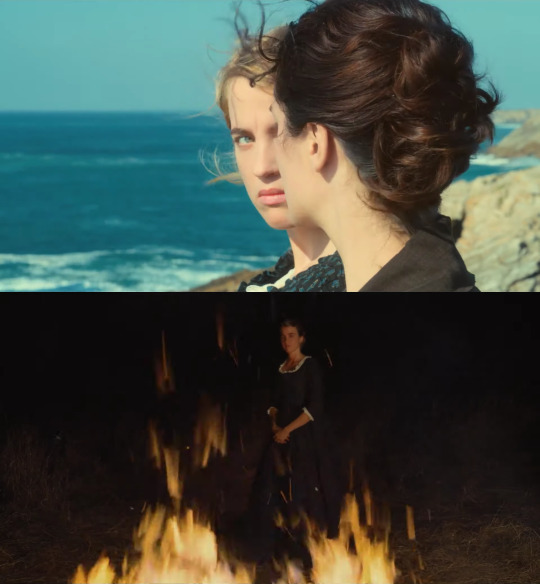



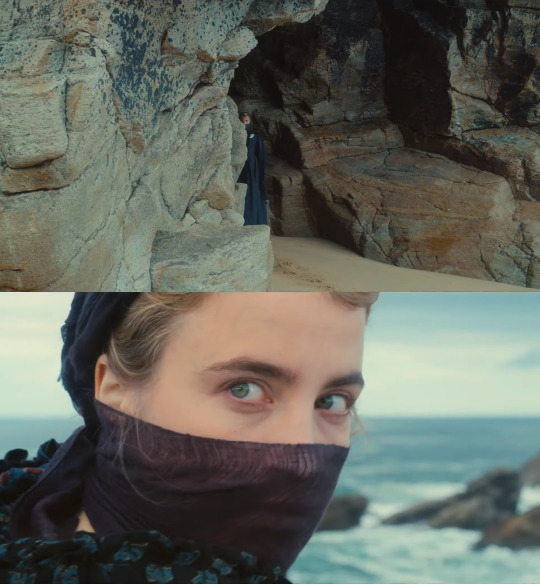





Portrait of a Lady on Fire, directed by Céline Sciamma, screenplay by Céline Sciamma, cinematography by Claire Mathon, music by Jean-Baptiste de Laubier and Arthur Simonini, and edit by Julien Lacheray.
Not everything is fleeting. Some feelings are deep.
22 notes
·
View notes
Photo

Karidja Touré in Girlhood (Céline Sciamma, 2014)
Cast: Karidja Touré, Assa Sylla, Lindsay Karamoh, Mariétou Touré, Idrissa Diabaté, Simina Soumaré, Dielika Coulibaly, Cyril Mendy, Djibril Gueye, Binta Diop, Chance N'Guessan. Screenplay: Céline Sciamma. Cinematography: Crystel Fournier. Production design: Thomas Grézaud. Film editing: Julien Lacheray. Music: Jean-Baptiste de Laubier.
Girlhood is an altogether absorbing look at young lives in the Paris banlieue, which might also be a description of Mathieu Kassovitz's celebrated 1995 film La Haine. But the difference between the two is striking and important: La Haine was about young men, a Jew, a Black, and an Arab, and worked out its story a little self-consciously as a commentary on the relations among three major ethnic groups. Its writer-director and its three principals were male, with all the implications of privilege that suggests. But Girlhood was written and directed by a woman, and its protagonist is female, a Black teenager named Marieme (Karidja Touré), who is determined to go her own way in life. Told that she doesn't have the grades to go to high school but should choose vocational education instead, Marieme rebels, determined to find her way against the odds. She falls in with a group of girls -- the French title was Bande de Filles, which might be translated Gang of Girls -- and adopts their ways, which include a little shoplifting, a little bullying of smaller kids for money, and excursions into Paris for the bright lights of the big city. They also include fights with other gangs, and when the leader of Marieme's gang, Lady (Assa Sylla), loses a fight and is embarrassed, Marieme, who has become known as "Vic," short for "Victory," takes on the winner of that fight and triumphs, stripping off the other girl's top and using a knife to cut away her bra as a trophy. Still, she must face the outside world. Her mother, Asma (Binta Diop), works as a maid in a large hotel and arranges for Marieme to take a job there, but she turns it down. Her life at home becomes intolerable when she sleeps with her boyfriend, Ismaël, and is beaten for being a slut by her older brother, Djibril (Cyril Mendy). So she goes to work as a runner for Abou (Djibril Gueye), a drug dealer, which gives her an income, a place to live, and some glimpse of the high life. But the end of the film finds her still solitary, still facing obstacles. Girlhood is a smart, sad movie with a deeply engaging performance by Touré, and a strong supporting cast.
0 notes
Note
hey there :) do you know what they are saying in the song that they use in portrait of a lady on fire? the one that is from the bonfire scene?
Hey hey ! There are some french articles where the composer (Jean-Baptiste de Laubier aka Para One) talks about it. He only says that the lyrics were written in latin by Céline Sciamma BUT the translation is a secret they want to keep from us 👀👀👀
15 notes
·
View notes
Text
A Sea of Emotion - Portrait of a Lady on Fire (Film Review)
A Sea of Emotion – Portrait of a Lady on Fire (Film Review)
(more…)
View On WordPress
#Adele Haenel#Arthur Simonini#Benedicte Couvreur#Cannes Film Festival#Céline Sciamma#Claire Mathon#Jean-Baptiste de Laubier#Noemie Merlant#Veronique Cayla
0 notes
Video
youtube
Today's review on MyOldAddiction.com, Tomboy by #CelineSciamma, "The marvel of the film is Zoé Héran's performance as the young protagonist" CELINE SCIAMMA Bil's rating (out of 5): BBBB. France, 2011. Hold Up Films…
#ARTE#Arte / Cofinova 6#Arte France Cinema#Bénédicte Couvreur#Canal+#Celine Sciamma#Centre National du Cinema et de L&039;Image Animee#Cheyenne Lainé#Christel Baras#Crystel Fournier#France#Hold Up Films#Jean-Baptiste de Laubier#Jeanne Disson#Jerôme Echenoz#Julien Lacheray#La Région Île-de-France#LGBT Cinema#Lilies Films#Malonn Lévana#Mathieu Demy#Noah Vero#Playtime#Rayan Boubekri#Sophie Cattani#Thomas Grézaud#Valérie Roucher#Yohan Vero#Zoé Héran
0 notes